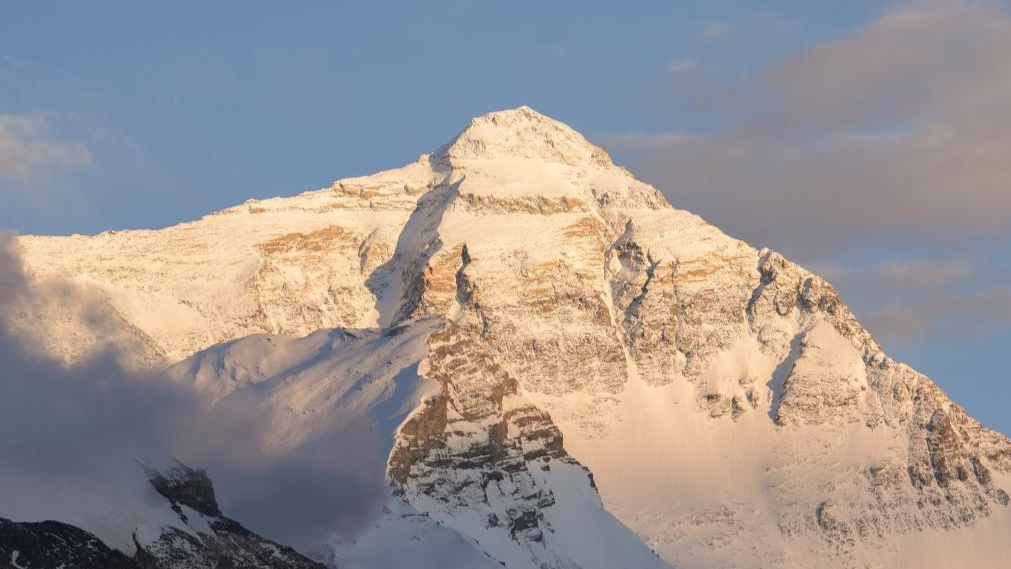
BEIJING - Why is Mount Qomolangma, also known as Mount Everest, much higher than the other high peaks? A new study has presented evidence that river erosion is behind the recent uplift of the highest mountain on Earth.
A research team led by Wang Chengshan from the China University of Geosciences, Beijing, and others from University College London from Britain carried out the study, which was published Monday in the journal Nature Geoscience.
According to Wang, an academician of Chinese Academy of Sciences, the formation of Mount Qomolangma as well as the whole Himalayas, is mainly due to the collision between the Indian Plate and the Eurasian Plate.
But the collision theory alone cannot fully explain why Mount Qomolangma is nearly 250 meters higher than Mount Qogir, the second-highest in the world, which itself is only tens of meters higher than the world's third and fourth-highest peaks. Such difference suggests that the uplift of Mount Qomolangma may be caused by some unique mechanism.
ALSO READ: 70-yr-old Wang Jian becomes oldest Chinese to reach summit of Mt Qomolangma
After years of research, the scientists discovered a unique evolution of the water system around Mount Qomolangma, which is closely related to the evolution of the Kosi River, an old river.

The study indicated that about 89,000 years ago, the Kosi River experienced a river capture event, a common phenomenon in mountain-building regions, referring to the process where one river "steals" the flow of another river through erosion. It led to a rapid expansion of the drainage area and an acceleration of the erosion rate, with the maximum annual erosion depth reaching up to 12 millimeters.
As the riverbed deepened, the surrounding rocks experienced isostatic rebound due to the weight lost, a process that contributed to the further uplift of Mount Qomolangma.
The study estimated that since the river capture event, the elevation of Mount Qomolangma has increased by about 0.2 to 0.5 millimeters per year, accumulating an additional height of 15 to 50 meters.
READ MORE: Snow atop Qomolangma much deeper than thought
"Although tectonic movements remain the primary cause of the uplift of Mount Qomolangma, this study reveals a new mechanism of mountain uplift caused by river capture, which helps people better understand the evolution of orogenic belt and the process of peak formation," said Wang.


